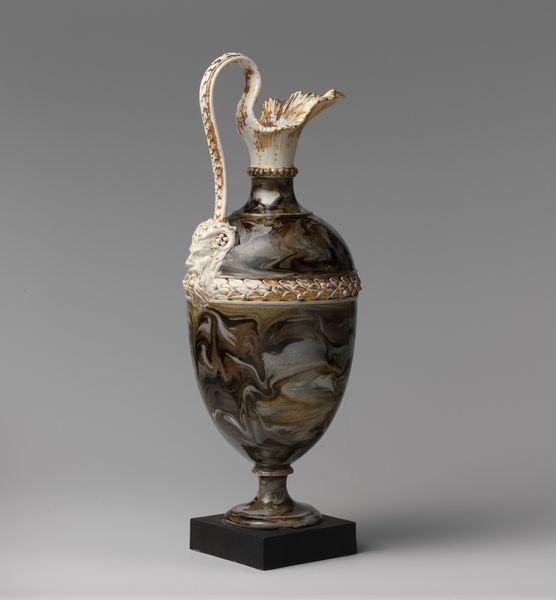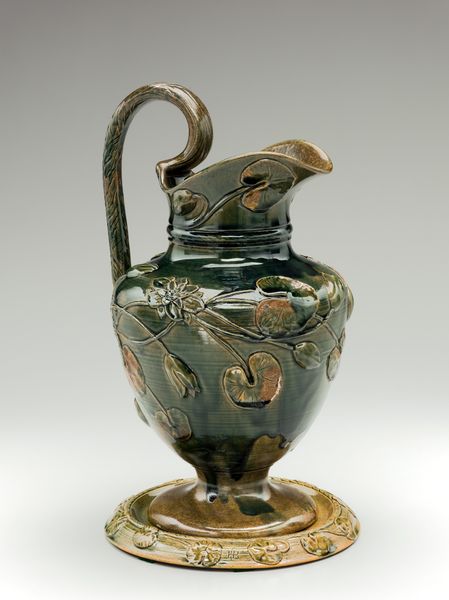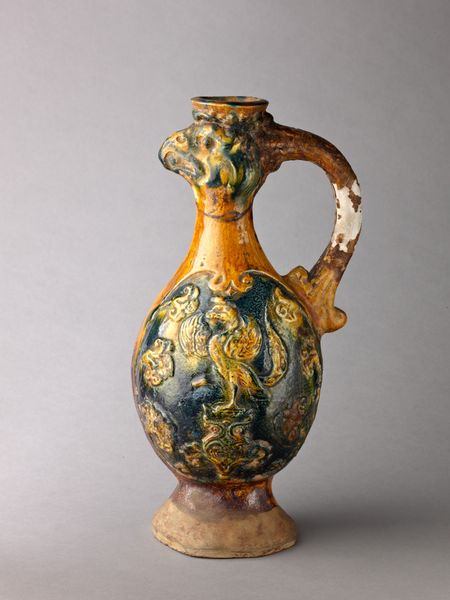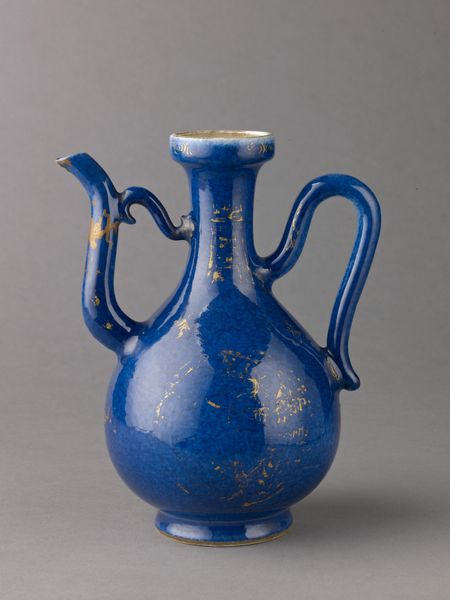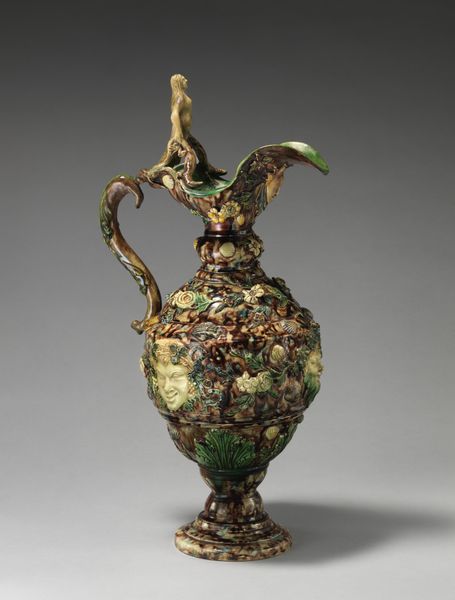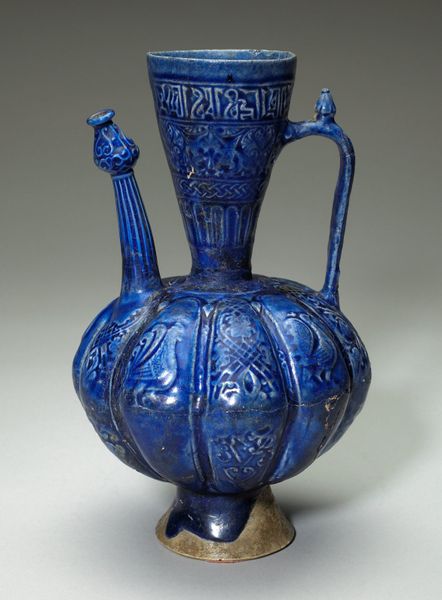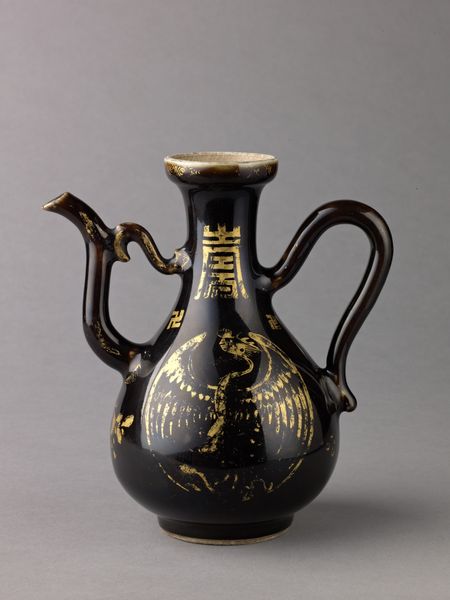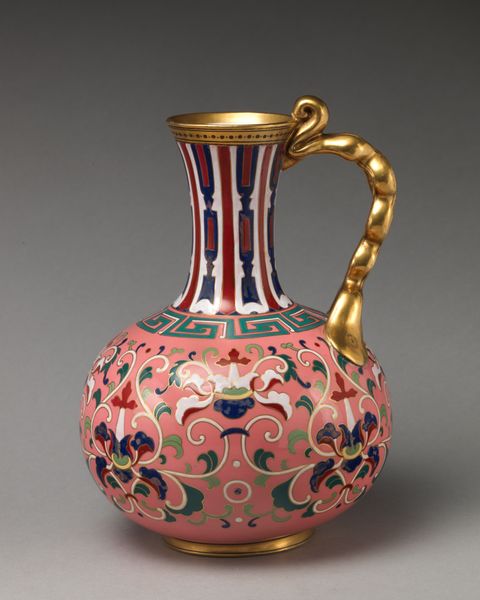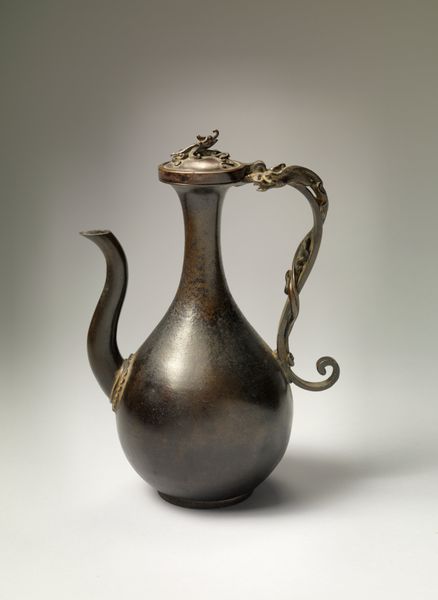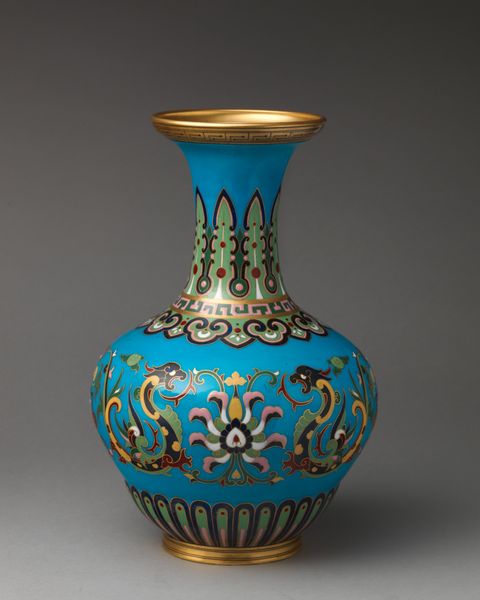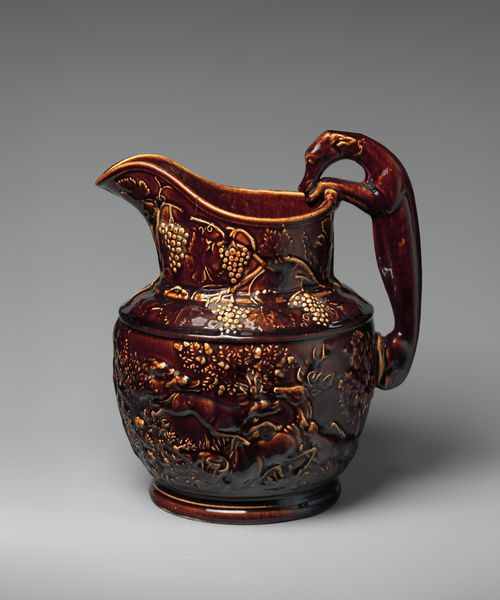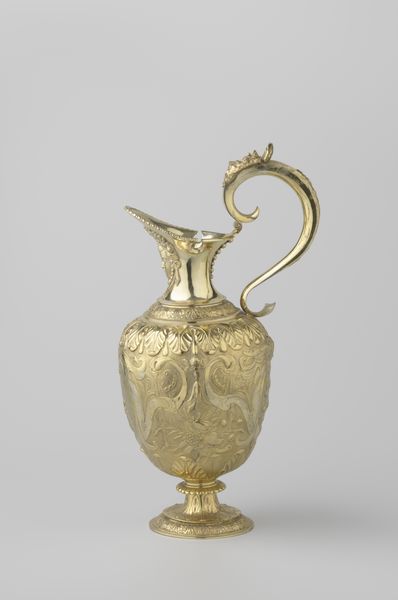
ceramic
#
ceramic
#
figuration
#
11_renaissance
#
ceramic
Dimensions: H. 28.7 cm, w. 17.8 cm, d. 12.1 cm
Copyright: Public Domain
This is Suzanne de Court’s painted enamel ewer, "The Triumph of Ceres," made in France, likely in the early 17th century. The choice of Ceres, the Roman goddess of agriculture, is significant here. The imagery isn’t simply decorative, but also reflects the cultural and economic values of the time. France, like much of Europe, depended heavily on agriculture, and artworks depicting bountiful harvests and pastoral scenes were common, often subtly reinforcing the social hierarchy. De Court’s ewer also testifies to the emergence of Limoges enamel as a significant industry within France and the growing demand for luxury goods among the elite. Interestingly, the ewer being made by a woman raises questions about the role of women in the art world of the period. How did she navigate the male-dominated artistic institutions? Was her work seen differently because of her gender? By examining records of enamel workshops and studying the economic history of the period, we can reveal the complex social forces that shaped its creation. Art is never made in a vacuum, but always in response to specific social and institutional contexts.
Comments
No comments
Be the first to comment and join the conversation on the ultimate creative platform.
